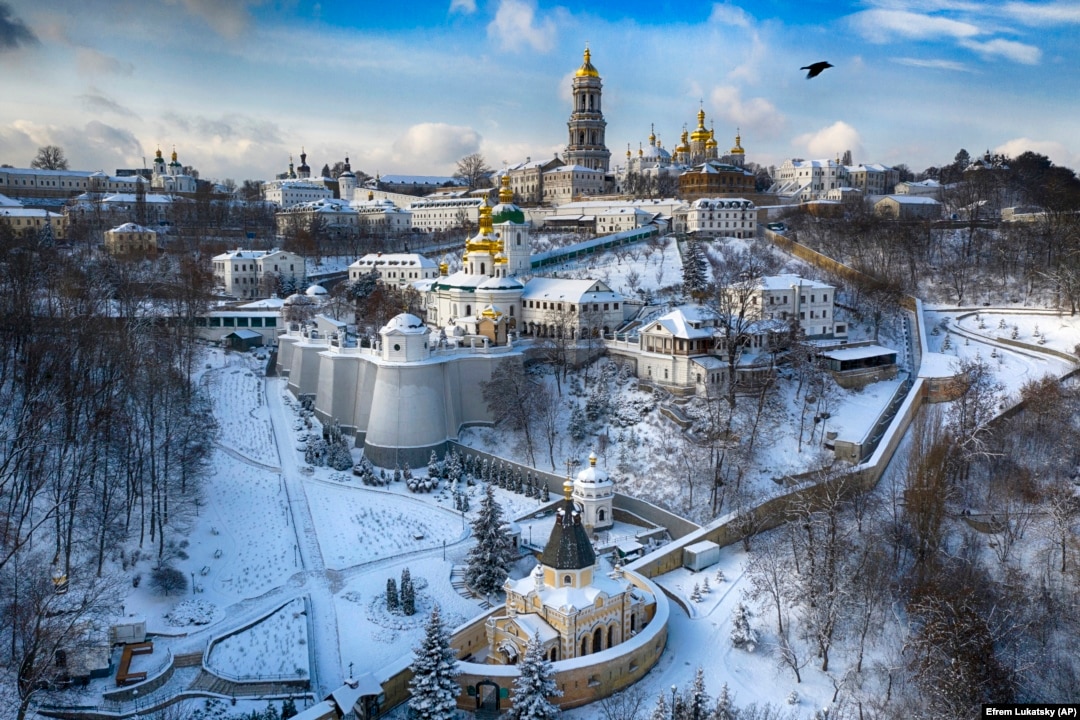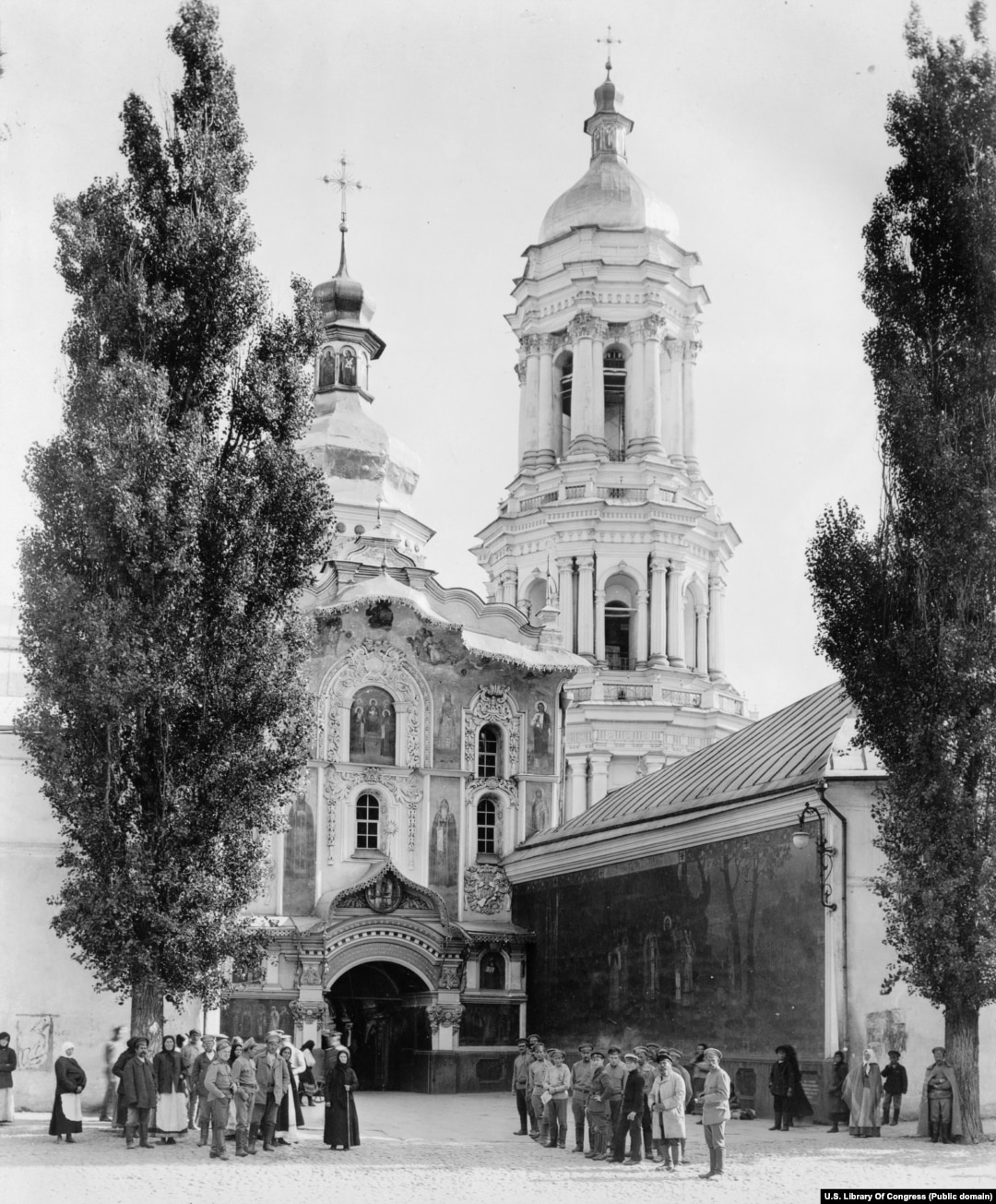Inside Kyiv's Sacred Cave Monastery As 'Eviction' Deadline Looms

This March 14 photo shows Ukrainian soldiers passing a monk in the Kyiv Pechersk Lavra as tensions mount over a March 29 deadline for clerics to leave the property.
The clergy have declared they will stay on in their historic home, as their supporters vow to back them “whatever the cost.”

The Kyiv Pechersk Lavra is a nearly 1,000-year-old monastery complex in the center of the Ukrainian capital.
A lavra is a monastery that includes cells for hermits, while pechersk means “of the caves.”

The main entrance to the lavra complex photographed in 1918.
According to Orthodox Christian lore, soon after the death of Jesus, traveling apostle Andrew pointed to the elevated western bank of today’s Dnieper River where the lavra now stands and vowed that "God's grace will shine on these hills. There will be a great city here and God will build many churches."
Sunlight streams through the interior of the Refectory Church of the Kyiv lavra.
The monastery complex was founded in 1051 and is described by UNESCO as “one of the most important Christian pilgrimage centers in the world.”
A 1977 photo of the Refectory Church of the monastery.
Under the Soviets, the clergy suffered repeated repression from the authorities up until the 1960s. During the Ukrainian-Soviet war, pro-Bolshevik militants executed the Metropolitan of the Russian Orthodox Church outside the walls of the lavra in 1918.
In November 1941, the Dormition Cathedral of the lavra was destroyed in an explosion. Most Ukrainian reports conclude that the retreating Soviet Red Army destroyed the building, while Russian sources say invading German troops were behind the crime.
After Ukraine gained its independence in 1991, the Dormition Cathedral (pictured here in 2008) was rebuilt in time for Ukraine’s independence day celebrations in 2000.
The lavra operated under the authority of the Moscow-affiliated branch of the Ukrainian Orthodox Church. That branch announced it would break all ties with the Russian religious authorities in May last year after Patriarch Kirill of Moscow repeatedly voiced support for the 2022 Russian invasion of Ukraine. Critics, however, say these changes have not altered the canonical status of the church and are thus insignificant.
Ukrainian security officers search the bags of a woman at the lavra on November 22, 2022.
The monastery complex was raided by the authorities soon after a video surfaced on November 12, 2022 showing worshipers inside the church singing a patriotic Russian song that ended with a line: “The ringing [of church bells] are floating, floating over Russia, Mother Russia is awakening.”
Ukrainian soldiers leave the lavra in January 2023.
On March 10, Ukraine’s Culture Ministry confirmed that a lease that had allowed the church to use part of the monastery would be terminated.
A woman viewing mummified monks in the catacombs of the monastery on February 5, 2023.
Passersby who spoke to AFP on March 14 were largely supportive of the ordered eviction, with one saying, “If they are pro-Moscow, they’re not welcome here."
A monk told the French news agency: “Many of the fathers, the monks, simply don't have anywhere except the lavra. It's our home. And for us, this [eviction notice] was a bolt from the blue."

